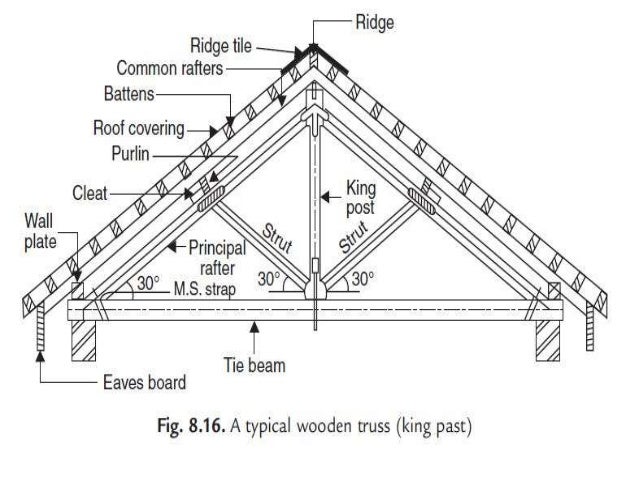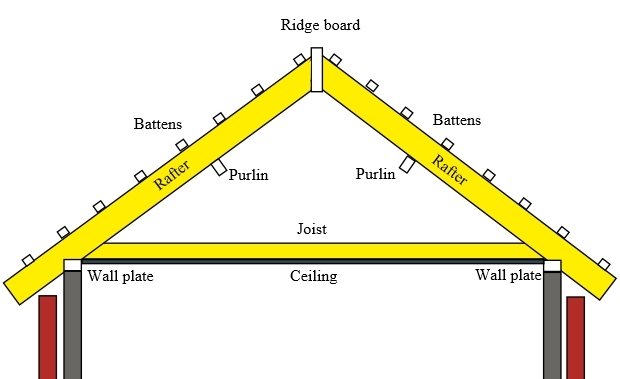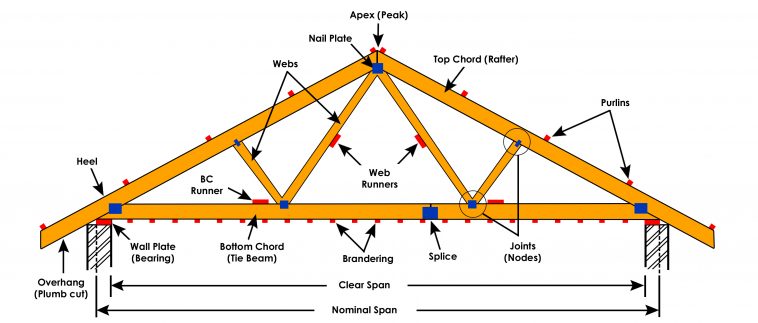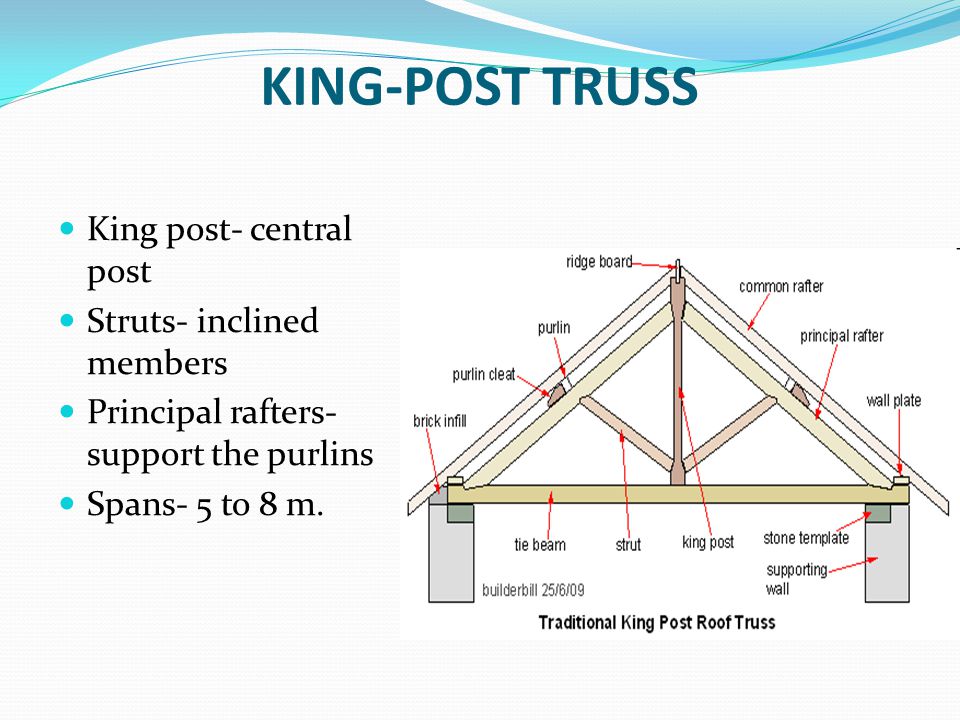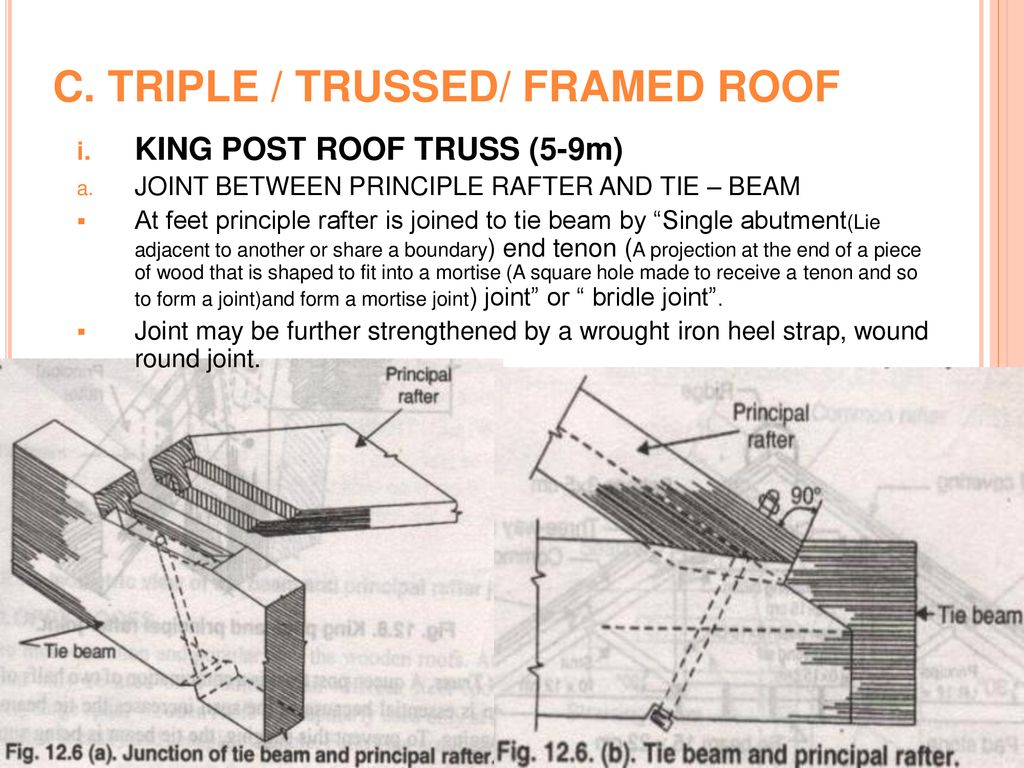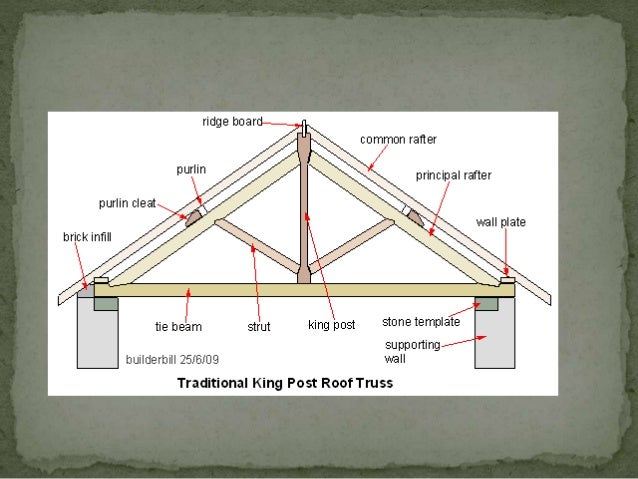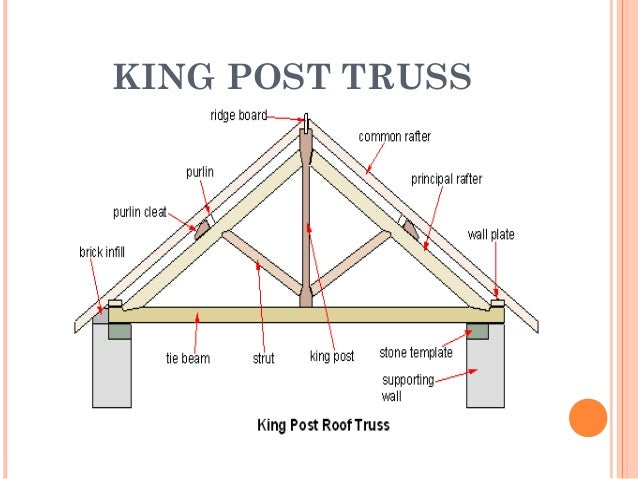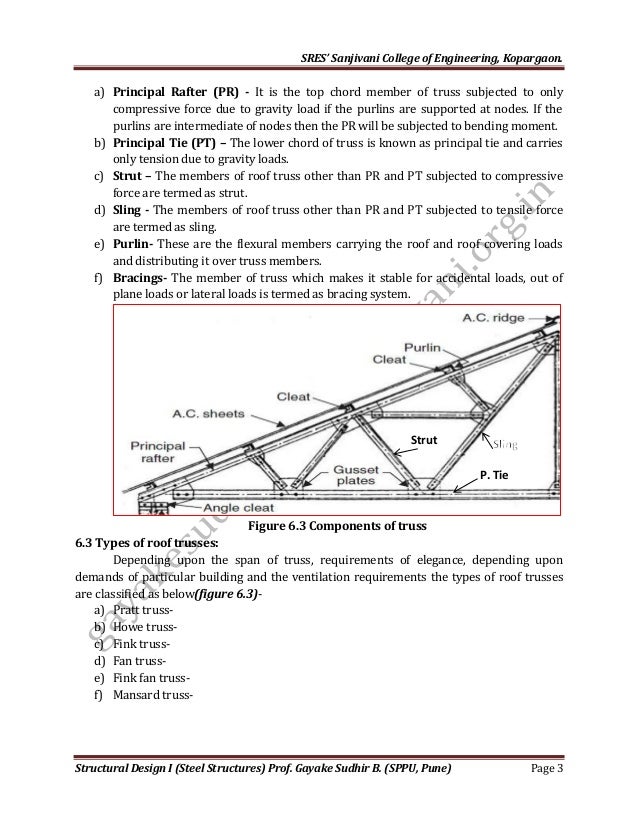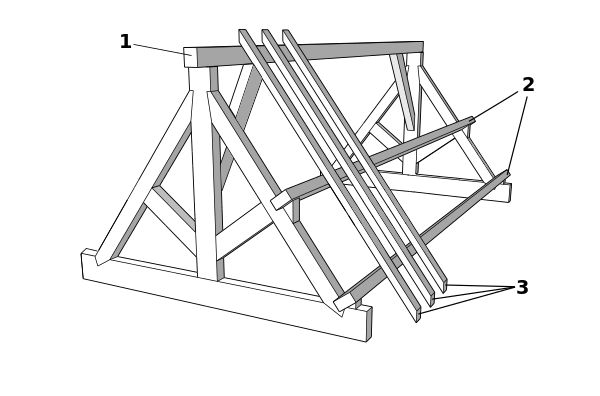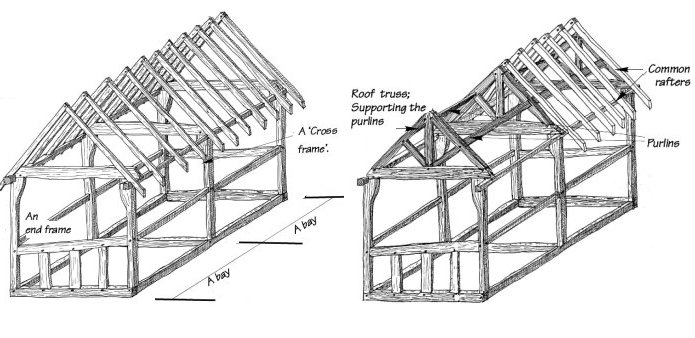Just as there are many types of roofs with many roof parts there are many different types of roof trusses this extensive article explains through a series of custom truss diagrams the different truss configurations you can use for various roofs.
In the roof truss for principal rafter most frequently used section is.
However with advanced technology new construction techniques have started using trusses shown on the right image above.
Three types of roof trusses most commonly used in residential construction are fink truss king post truss and scissor truss.
And ceiling joists in accordance with section r802 8 and for trusses in accordance with section r802 10 3.
Components of roof truss.
Rafters have a tendency to flatten under gravity thrusting outwards on the walls.
A purlin plate in wood construction is also called an arcade plate in european english under purlin and principal purlin.
Purlin plates are beams which support the mid span of rafters and are supported by posts.
By supporting the rafters they allow longer spans than the rafters alone.
As with rafter style roofs toenailing is one of the most common ways of attaching a truss style roof to a wall plate.
A common truss is recognizable by its triangular shape and is most often used in roof construction.
Rafter boards are fastened to the ridge board at the peak and the top plate where they join the wall.
The following are various components of a roof truss.
Name three types of roof trusses that are most commonly used in residential construction.
Rafter size depends on the distance to be spanned spacing of the rafters and weight to be supported.
Purlin plates in wooden construction.
The term plate means a major horizontal supporting timber.
A timber roof truss is a structural framework of timbers designed to bridge the space above a room and to provide support for a roof trusses usually occur at regular intervals linked by longitudinal timbers such as purlins the space between each truss is known as a bay.
While this article focuses on configurations we also have a very cool set of illustrations showcasing the different parts anatomy of roof trusses.
For seismic design categories a b and c where the distance from the top of the braced wall panel to the top of the rafters or roof trusses above is 91 4.
Toenail a truss into the top of the wall plate by nailing through the sides of the bottom chord at a 30 degree angle.
The boards creating the slope of the roof are wider than lumber used to build trusses 2x8s 2x10s and 2x12s are most common in rafters vs.
In finished space insulation is placed between the rafter boards and drywall or other material is fastened to the face.
A roof truss is supported by the exterior walls and span the width of the building.

